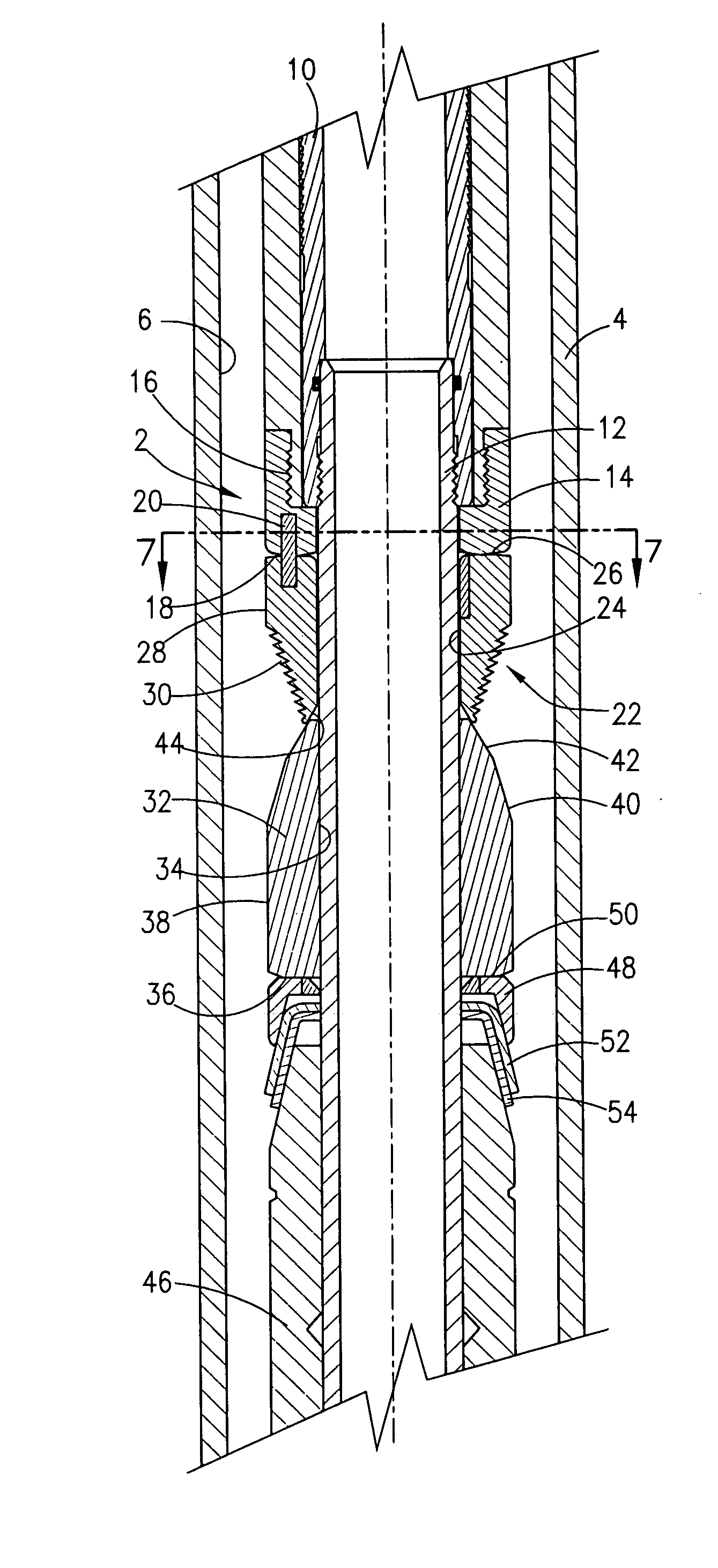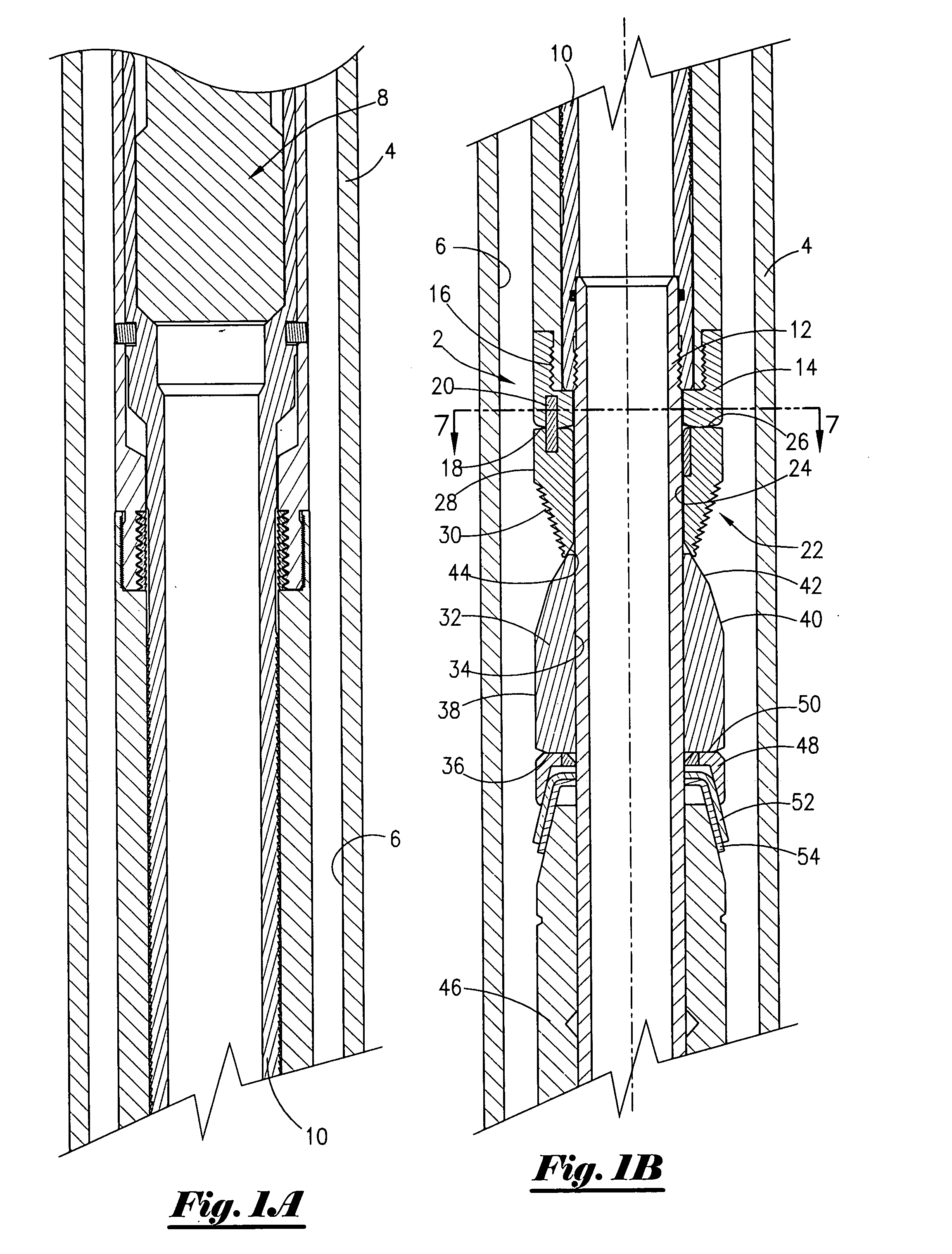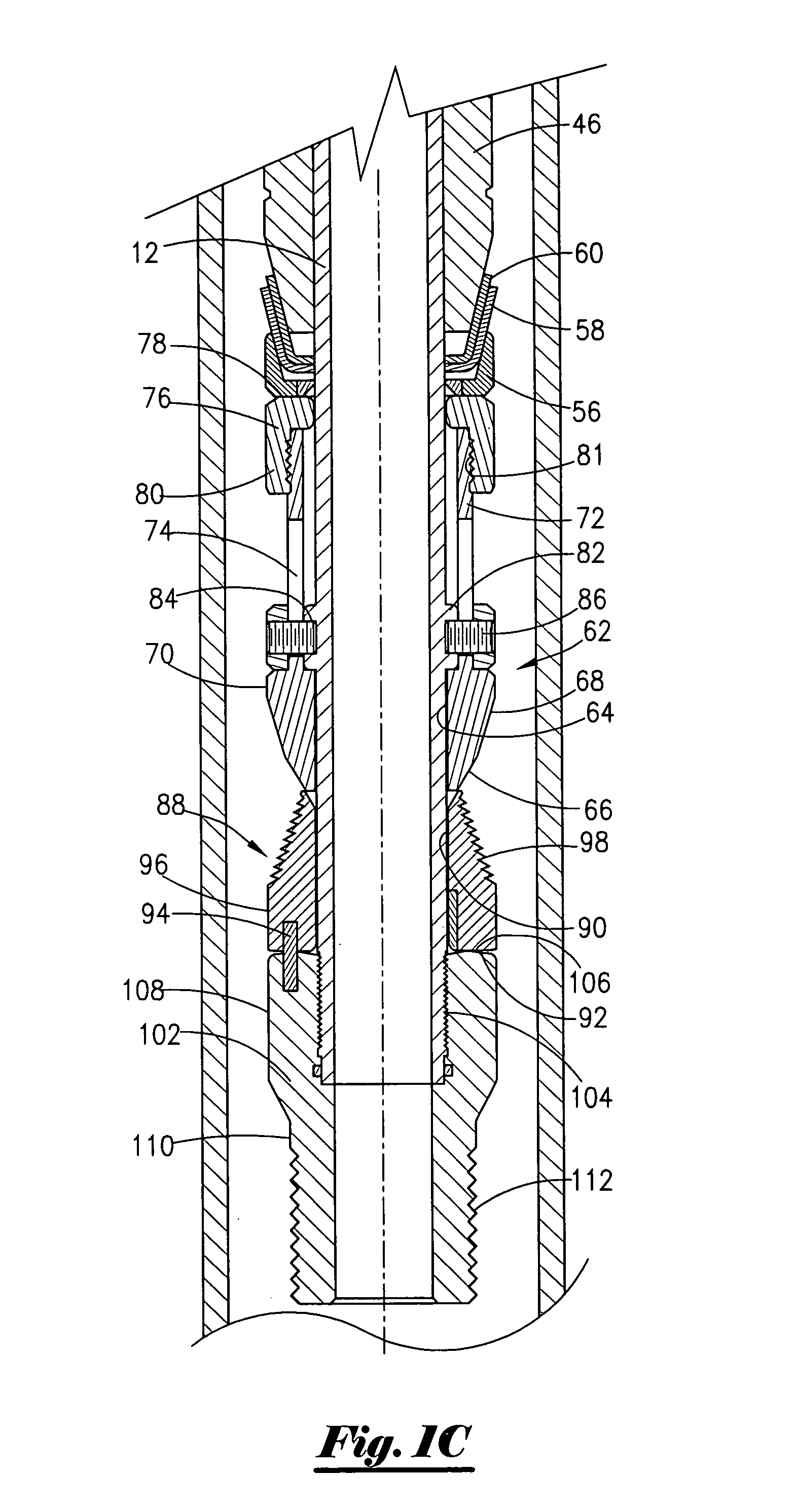Apparatus for controlling slip deployment in a downhole device
a technology for packing devices and slip extensions, which is applied in the direction of sealing/packing, fluid removal, borehole/well accessories, etc., can solve the problems of one piece segmented assembly being used in applications with high expansion ratio, failure of the packer to anchor and seal, and inability to ensure the symmetry around the circumference of the packing device is maintained, etc., to achieve the effect of increasing the expansion ratio of the plug, increasing the expansion ratio, and saving the cost of production
- Summary
- Abstract
- Description
- Claims
- Application Information
AI Technical Summary
Benefits of technology
Problems solved by technology
Method used
Image
Examples
Embodiment Construction
[0034]Referring now to FIGS. 1A, 1B, and 1C, the most preferred embodiment of the present invention in the run-in mode will now be described. More specifically, the apparatus 2 is shown disposed within a well 4, and wherein the well 4 may be referred to as a casing string 4. The well 4 has an inner diameter portion 6. As those of ordinary skill in the art will recognize, the apparatus 2 is operatively associated with a setting tool means 8 for setting the apparatus 2. Setting tool means may be hydraulically activated, mechanically activated, explosively activated, or electrically activated. In the most preferred embodiment, the setting tool means 8 used with the apparatus 2 will be electrically activated. Setting tool means of this type are commercially available from Owen Oil Tools Inc. under the name Wireline Pressure Setting Tool.
[0035]The setting tool means 8 is operatively attached with a power mandrel 10 that is threadedly attached to the inner mandrel 12 of the apparatus 2. T...
PUM
 Login to View More
Login to View More Abstract
Description
Claims
Application Information
 Login to View More
Login to View More - R&D
- Intellectual Property
- Life Sciences
- Materials
- Tech Scout
- Unparalleled Data Quality
- Higher Quality Content
- 60% Fewer Hallucinations
Browse by: Latest US Patents, China's latest patents, Technical Efficacy Thesaurus, Application Domain, Technology Topic, Popular Technical Reports.
© 2025 PatSnap. All rights reserved.Legal|Privacy policy|Modern Slavery Act Transparency Statement|Sitemap|About US| Contact US: help@patsnap.com



